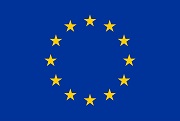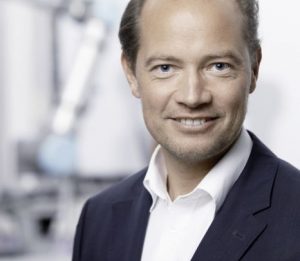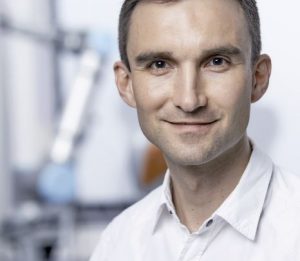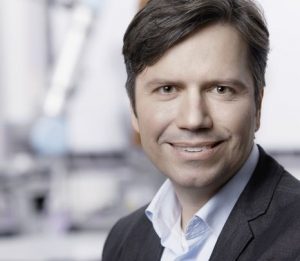Zörrer, H., Weichhart, G., Schmoigl Tonis, M., Bieg, T., Propst, M., Schuster, D., Sturm, N., Nativel, C., Salomon, G., Strohmeier, F., Sackl, A., Eberle, M., & Pichler, A. (2023). Enabling End-Users in Designing and Executing of Complex, Collaborative Robotic Processes. Applied System Innovation, 6(3), 56. https://doi.org/10.3390/asi6030056
Deshpande, K., Möhl, P., Hämmerle, A., Weichhart, G., Zörrer, H., & Pichler, A. (2022). Energy Management Simulation with Multi-Agent Reinforcement Learning: An Approach to Achieve Reliability and Resilience. Energies, 15(19). https://doi.org/10.3390/en15197381
Haemmerle, A., Deshpande, K., Moehl, P., & Weichhart, G. (2022). Training an Energy Management Simulation with Multi-Agent Reinforcement Learning. Researchgate.Net, May. https://www.researchgate.net/profile/Kapil-Deshpande-5/publication/360912718_Training_an_Energy_Management_Simulation_with_Multi-Agent_Reinforcement_Learning/links/62920b1455273755ebbda8af/Training-an-Energy-Management-Simulation-with-Multi-Agent-Reinforc
Pratheepkumar, A., Hofmann, M., Ikeda, M., & Pichler, A. (2022). Domain Adaptation With Evolved Target Objects for AI Driven Grasping. IEEE International Conference on Emerging Technologies and Factory Automation, ETFA, 2022-Septe. https://doi.org/10.1109/ETFA52439.2022.9921470
Zörrer, H., Propst, M., Weichhart, G., Pichler, A., Strohmeier, F., & Schmoigl-Tonis, M. (2022). ROBxTASK RTE – a lightweight runtime environment to implement collaborative processes across different robotic systems. IFAC-PapersOnLine, 55(10), 2647–2652. https://doi.org/10.1016/j.ifacol.2022.10.109
Akkaladevi, S. C., Plasch, M., Hofmann, M., & Pichler, A. (2021). Semantic knowledge based reasoning framework for human robot collaboration. Procedia CIRP, 97, 373–378. https://doi.org/10.1016/j.procir.2020.05.253
Ikeda, M., Chitturi, N., Ganglbauer, M., & Pichler, A. (2021). ScienceDirect Knowledge Based Accuracy Improvement in Programming by Demonstration of Point Based Processes. 00(2019).
Ikeda, M., Ganglbauer, M., Chitturi, N., & Pichler, A. (2021). ScienceDirect Geometric Reasoning enabled One Shot Learning for Robotic Tasks. 00(2019).
Plasch, M., Akkaladevi, S. C., Hofmann, M., Wögerer, C., & Pichler, A. (2021). Event-driven knowledge engineering as enabling technology towards configuration of assistance systems in industrial assembly. Smart Innovation, Systems and Technologies, 200, 261–272. https://doi.org/10.1007/978-981-15-8131-1_24
Viktor, A., Ikeda, M., & Pichler, A. (2021). ScienceDirect Panorama Image Based Code Free Programming of Line Based Robotic Operations. 00(2019).
Weichhart, G., Mangler, J., Raschendorfer, A., Mayr-Dorn, C., Huemer, C., Hämmerle, A., & Pichler, A. (2021). An adaptive system-of-systems approach for resilient manufacturing. Elektrotechnik Und Informationstechnik, 138(6), 341–348. https://doi.org/10.1007/s00502-021-00912-2
Weichhart, G., Pichler, A., Strohmeier, F., Schmoigl, M., & Zorrer, H. (2021). The ROBxTASK architecture for interoperability of robotic systems. 2021 IEEE International Workshop on Metrology for Industry 4.0 and IoT, MetroInd 4.0 and IoT 2021 – Proceedings, 449–453. https://doi.org/10.1109/MetroInd4.0IoT51437.2021.9488560
AKKALADEVI, Sharath Chandra, et al. Semantic knowledge based reasoning framework for human robot collaboration. Procedia CIRP, 2021, 97. Jg., S. 373-378.
Chandra, S., Plasch, M., Hofmann, M., & Pichler, A. (2020). ScienceDirect Semantic Knowledge Based Reasoning Framework for Human Robot Collaboration. 00(2019), 1–6.
Spitzer, F., Lindorfer, R., Froschauer, R., Hofmann, M., & Ikeda, M. (2020). A generic Approach for the Industrial Application of Skill-based Engineering using OPC UA. Proceedings of the IEEE International Conference on Emerging Technologies And Factory Automation (ETFA), 8.
Weichhart, G., Ikeda, M., & Propst, M. (2020). PlugBot Architecture for Modular Manufacturing Enterprise Interoperability may be seen as one end of a continuum ranging from tight integration of.
Akkaladevi, S. C., Plasch, M., Pichler, A., & Ikeda, M. (2019). Towards reinforcement based learning of an assembly process for human robot collaboration. Procedia Manufacturing, 38(Faim 2019), 1491–1498. https://doi.org/10.1016/j.promfg.2020.01.138
Heindl, C., Ikeda, M., Stübl, G., Pichler, A., & Scharinger, J. (2019). Enhanced Human-Machine Interaction by Combining Proximity Sensing with Global Perception. 2020. http://arxiv.org/abs/1910.02445
Heindl, C., Ikeda, M., Stübl, G., Pichler, A., & Scharinger, J. (2019). Metric Pose Estimation for Human-Machine Interaction Using Monocular Vision. 1. http://arxiv.org/abs/1910.03239
Akkaladevi, S. C., Plasch, M., Eitzinger, C., Pichler, A., & Rinner, B. (2018). Towards a Context Enhanced Framework for Multi Object Tracking in Human Robot Collaboration. IEEE International Conference on Intelligent Robots and Systems, 8435–8442. https://doi.org/10.1109/IROS.2018.8593842
Akkaladevi, S. C., Plasch, M., Maddukuri, S., Eitzinger, C., Pichler, A., & Rinner, B. (2018). Toward an interactive reinforcement based learning framework for human robot collaborative assembly processes. Frontiers Robotics AI, 5(NOV), 1–15. https://doi.org/10.3389/frobt.2018.00126
Fast-Berglund, A., Thorvald, P., Billing, E., Palmquist, A., Romero, D., & Weichhart, G. (2018). Conceptualizing Embodied Automation to Increase Transfer of Tacit knowledge in the Learning Factory. 9th International Conference on Intelligent Systems 2018: Theory, Research and Innovation in Applications, IS 2018 – Proceedings, 358–364. https://doi.org/10.1109/IS.2018.8710482
Weichhart, G., Fast-Berglund, A., Romero, D., & Pichler, A. (2018). An Agent- and Role-based Planning Approach for Flexible Automation of Advanced Production Systems. 9th International Conference on Intelligent Systems 2018: Theory, Research and Innovation in Applications, IS 2018 – Proceedings, 391–399. https://doi.org/10.1109/IS.2018.8710546
Wögerer, C., Mühlberger, M., Ikeda, M., Kastner, J., & Chitturi, N. C. (2018). Inkjet Printings on FFF printed curved surfaces. Fraunhofer Direct Digital Manufacturing Conference, March, 2–5.
Hämmerle, A., & Weichhart, G. (2017). Variable neighbourhood search solving sub-problems of a lagrangian flexible scheduling problem. ICORES 2017 – Proceedings of the 6th International Conference on Operations Research and Enterprise Systems, 2017-Janua, 234–241. https://doi.org/10.5220/0006114102340241
Weichhart, G., & Hämmerle, A. (2017). Lagrangian relaxation realised in the NgMPPS multi actor architecture. Lecture Notes in Computer Science (Including Subseries Lecture Notes in Artificial Intelligence and Lecture Notes in Bioinformatics), 10413 LNAI, 138–155. https://doi.org/10.1007/978-3-319-64798-2_9
Akkaladevi, S. C., Ankerl, M., Fritz, G., & Pichler, A. (2016). Real-time tracking of rigid objects using depth data. Computer Vision and Robotics.
Akkaladevi, S., Ankerl, M., Heindl, C., & Pichler, A. (2016). Tracking multiple rigid symmetric and non-symmetric objects in real-time using depth data. Proceedings – IEEE International Conference on Robotics and Automation, 2016-June, 5644–5649. https://doi.org/10.1109/ICRA.2016.7487784
Maddukuri, S. C., Heidl, W., Eitzinger, C., & Pichler, A. (2016). Structural Synthesis based on PCA: Methodology and Evaluation. 348–355. https://doi.org/10.5220/0005721403480355
Plasch, M., Ebenhofer, G., Hofmann, M., Rooker, M., Akkaladevi, S., & Pichler, A. (2016). Workspace Sharing Assembly Robots: Applying IEC 61499 to System Integration and Application Development. 397–422. https://doi.org/10.1201/b19391-23
Weichhart, G., & Hämmerle, A. (2016). Multi-actor architecture for schedule optimisation based on lagrangian relaxation. Lecture Notes in Computer Science (Including Subseries Lecture Notes in Artificial Intelligence and Lecture Notes in Bioinformatics), 9872 LNAI, 190–197. https://doi.org/10.1007/978-3-319-45889-2_14
Wögerer, C., Mühlberger, M., & Ikeda, M. (2016). ADDMANU – An Austrian Lighthouse Project for Additive Manfacturing. c, 35–40.
Akkaladevi, S., & Eitzinger, C. (2015). Performance Evaluation of a Cognitive Robotic System. Austrian Robotic Workshop, Klagenfurt, Austria, 43(0), 7–9.
Akkaladevi, S., Heindl, C., Angerer, A., & Minichberger, J. (2015). Action Recognition for Industrial Applications using Depth Sensors Action Recognition for Industrial Applications using Depth Sensors. 43(November), 1–4.
Zhou, K., Rooker, M., Akkaladevi, S. C., Fritz, G., & Pichler, A. (2015). How industrial robots benefit from affordances. Lecture Notes in Computer Science (Including Subseries Lecture Notes in Artificial Intelligence and Lecture Notes in Bioinformatics), 8926, 455–458. https://doi.org/10.1007/978-3-319-16181-5_35
Plasch, M., Hofmann, M., Ebenhofer, G., & Rooker, M. (2014). Reduction of development time by using scriptable IEC 61499 function blocks in a dynamically loadable type library. 19th IEEE International Conference on Emerging Technologies and Factory Automation, ETFA 2014. https://doi.org/10.1109/ETFA.2014.7005164
Rooker, M., Hofmann, M., Minichberger, J., Ikeda, M., Ebenhofer, G., & Pichler, A. (2014). Quality Inspection performed by a Flexible Robot System. 47–51.
Rooker, M., Hofmann, M., Minichberger, J., Ikeda, M., Ebenhofer, G., Fritz, G., & Pichler, A. (2014). Flexible and assistive quality checks with industrial robots. Proceedings for the Joint Conference of ISR 2014 – 45th International Symposium on Robotics and Robotik 2014 – 8th German Conference on Robotics, ISR/ROBOTIK 2014, 184–189.
Akkaladevi, S. C., & Eitzinger, C. (2013). DARWIN – D extrous A ssembler R obot W orking with embodied INtelligence ). 43(0), 7252.
Capco, J., Rooker, M., & Pichler, A. (2013). RRT planner for the binpicking problem. 9th International Workshop on Robot Motion and Control, RoMoCo 2013 – Workshop Proceedings, 1, 154–160. https://doi.org/10.1109/RoMoCo.2013.6614601
Hämmerle, A., & Ankerl, M. (2013). Solving a vehicle routing problem with ant colony optimisation and stochastic ranking. Lecture Notes in Computer Science (Including Subseries Lecture Notes in Artificial Intelligence and Lecture Notes in Bioinformatics), 8111 LNCS(PART 1), 259–266. https://doi.org/10.1007/978-3-642-53856-8-33
Plasch, M., Ebenhofer, G., Hofmann, M., Bauer, H., Wögerer, C., Rooker, M., & Pichler, A. (2013). Ein modulares Roboterassistenzsystem zur Effizienzsteigerung in der Produktion. Internationales Forum Meachtronik.
Rooker, M., Angerer, A., Wallhoff, F., Blume, J., Bannatt, A., Ferrara, P., Olarra, A., Kiirikki, J., & Pichler, A. (2013). Flexible Assistance System for Packaging Electronic Consumer Goods using Industrial Robots *.
Plasch, M., Pichler, A., & Bauer, H. (2012). A Plug & Produce Approach to Design Robot Assistants in a Sustainable Manufacturing Environment. 22nd International Conference on Flexible Automation and Intelligent Manufacturing (FAIM 2012), 43(0), 8. http://www.locobot.eu/wp-content/uploads/2011/02/A-Plug-Produce-Approach-to-Design-Robot-Assistants-in-a-Sustainable-Manufacturing-Environment_FAIM2012.pdf
Wögerer, C., Bauer, H., Rooker, M., Ebenhofer, G., Rovetta, A., Robertson, N., & Pichler, A. (2012). LOCOBOT – Low cost toolkit for building robot co-workers in assembly lines. Lecture Notes in Computer Science (Including Subseries Lecture Notes in Artificial Intelligence and Lecture Notes in Bioinformatics), 7507 LNAI(PART 2), 449–459. https://doi.org/10.1007/978-3-642-33515-0_45
Ankerl, M., & Hämmerle, A. (2009). Applying Ant colony optimisation to dynamic pickup and delivery. Lecture Notes in Computer Science (Including Subseries Lecture Notes in Artificial Intelligence and Lecture Notes in Bioinformatics), 5717 LNCS, 721–728. https://doi.org/10.1007/978-3-642-04772-5_93
Pichler, A., Ikeda, M., & Stübl, G. (2009). Ein lernfähiger adaptiver Roboter für Handhabung komplexer hochvarianter Teile. Internationales Forum Meachtronik.
Rooker, M. N., Ebenhofer, G., & Strasser, T. (2009). Reconfigurable control in distributed automation systems. Proceedings of the 2009 ASME/IFToMM International Conference on Reconfigurable Mechanisms and Robots, ReMAR 2009, 705–714.
Rooker, M. N., Strasser, T., Ebenhofer, G., Hofmarm, M., & Osuna, R. V. (2008). Modeling flexible mechatronical based assembly systems through simulation support. IEEE International Conference on Emerging Technologies and Factory Automation, ETFA, 452–455. https://doi.org/10.1109/ETFA.2008.4638434
Strasser, T., Rooker, M. N., & Ebenhofer, G. (2008). Distributed Control Concept for a 6-DOF Reconfigurable Robot Arm. Control.
Hämmerle, A., Karageorgos, A., Pirker, M., Reitbauer, A., & Weichhart, G. (2004). A role-based infrastructure for customised agent system development in supply networks. Conference Proceedings – IEEE International Conference on Systems, Man and Cybernetics, 5, 4692–4699. https://doi.org/10.1109/ICSMC.2004.1401272
Stalker, I. D., Mehandjiev, N. D., Weichhart, G., & Fessl, K. (2004). Agents for Decentralised Process Design. Proceedings of the 12th International Conference on Cooperative Information Systems, 23–25.
Hämmerle, A., Karageorgos, A., Mehandjiev, N., & Weichhart, G. (2003). A GENTCITIES TECHNICAL NOTE Integrated Logisitcs and Prodction Planning. Agentcities Technote Series, 1–15.
Hämmerle, A., Weichhart, G., & Fessl, K. (2002). The MaBE project: An agent-based environment for business networks. Proceedings – International Workshop on Database and Expert Systems Applications, DEXA, 2002-Janua, 646–650. https://doi.org/10.1109/DEXA.2002.1045971
Hämmerle, A., Schleicher, M., Kollingbaum, M., & Lane, M. (1999). Skilled Resources in Holonic Manufacturing Systems.
Hämmerle, A., Dupré, C., & Hingerl, K. (1997). Distributed Knowledge and an Approach To Path-Planning. 8th DAAAM INTERNATIONAL SYMPOSIUM, October.
Akkaladevi, S., Ebenhofer, G., & Matthias, P. (n.d.). Benchmarking a Cognitive System. 4321–4323.
Hofmann, M., Ikeda, M., Minichberger, J., Fritz, G., & Pichler, A. (n.d.). Automatic Coverage Planning System for Quality Inspection of Complex Objects *. 3–4.
![]()






